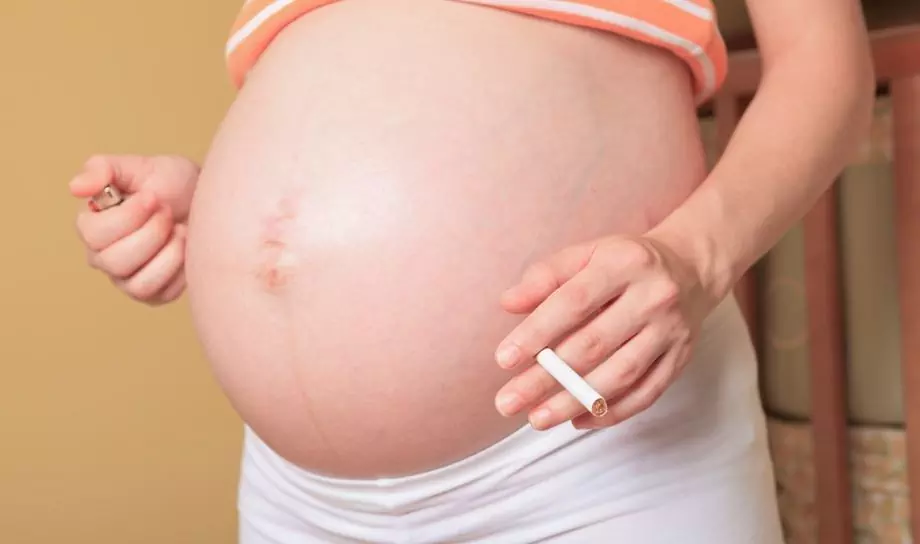- Author Rachel Wainwright [email protected].
- Public 2023-12-15 07:39.
- Last modified 2025-11-02 20:14.
Smoking while breastfeeding
Smoking is a stress reliever for many people. Breastfeeding mothers often face difficulties that lead them back to this stress-reducing habit. Tobacco smoke contains at least 3,800 constituents, and nicotine is an addictive substance. Cigarette smoke is harmful to children as it increases the risk of respiratory infections and lung cancer.

Harm of smoking while breastfeeding
Research shows that if a woman smokes before breastfeeding, the nicotine is passed to the baby through breast milk. The half-life of nicotine is about an hour and a half, meaning it will still be in breast milk for at least three hours after smoking. Smoking while breastfeeding can suppress milk production and also reduce the vitamin C levels that a baby receives through breast milk.
Nicotine is toxic and exposure to high levels of nicotine through milk can cause nicotine addiction and nicotine poisoning in a child. Signs of nicotine addiction in children include symptoms of sleep disturbance, headaches, and irritability. Symptoms of nicotine poisoning in babies include vomiting after feeding, gray skin color, loose stools, increased heart rate, and anxiety. If a child is exposed to secondhand smoke, the risk of sudden infant death syndrome increases.
The biggest health risks to a baby from smoking while breastfeeding are:
- The risk of the child getting respiratory allergies;
- Slowing down the process of growth and development of the child;
- The risk of respiratory and gastrointestinal diseases;
- Increased irritability;
- Increased risk of apnea (respiratory arrest for short periods of time);
- Strabismus;
- Hearing impairment;
- Vulnerability to infections;
- Allergies;
- Immunodeficiency.
Babies who are exposed to cigarette smoke due to smoking while feeding have a much higher incidence of pneumonia, asthma, ear infections, bronchitis, sinus infections, and eye irritation.
The more cigarettes and the more often the smoking process occurs during breastfeeding, the greater the risk to the health of the baby. If a woman cannot or does not want to quit smoking, then the safest thing for the child is to reduce the number of cigarettes.
Leading pediatricians believe that not only nicotine transmitted through mother's milk affects the baby, but smoking in the same room with the baby acts as an irritant. Children who are exposed to secondhand smoke in the home have low blood cholesterol levels. Recent studies show that families where both parents are smokers double the risk of a child developing lung cancer later in life.
Smoking while breastfeeding affects the level of prolactin, a hormone that affects milk production.
One study (Laurberg 2004) indicated that smoking while breastfeeding by women who live in areas with mild to moderate iodine deficiency leads to a decrease in the iodine content in breast milk, which is required for the baby's thyroid gland, compared to non-smoking mothers. The study authors suggested that breastfeeding mothers who smoke should take iodine supplements.
To reduce the baby's risk of illness from smoking while feeding, the following guidelines should be followed:
- First, it is necessary to smoke in a room separate from the child or outdoors, so as not to expose the child to additional consumption of second-hand smoke and particulate matter;
- Second, it is best to smoke immediately after a feed to reduce the nicotine level in milk until the next feed;
- Thirdly, it is desirable to reduce the number of cigarettes to 5 pieces per day.
Found a mistake in the text? Select it and press Ctrl + Enter.






